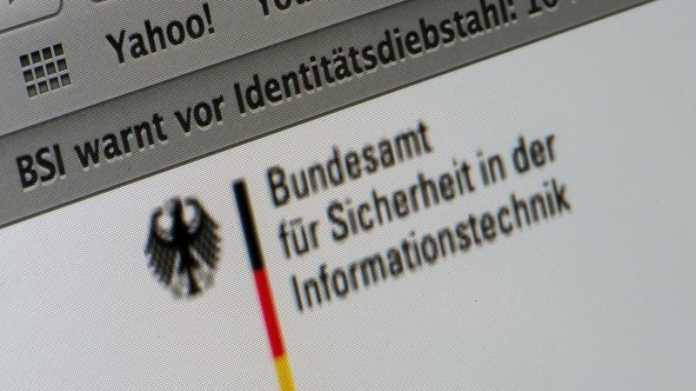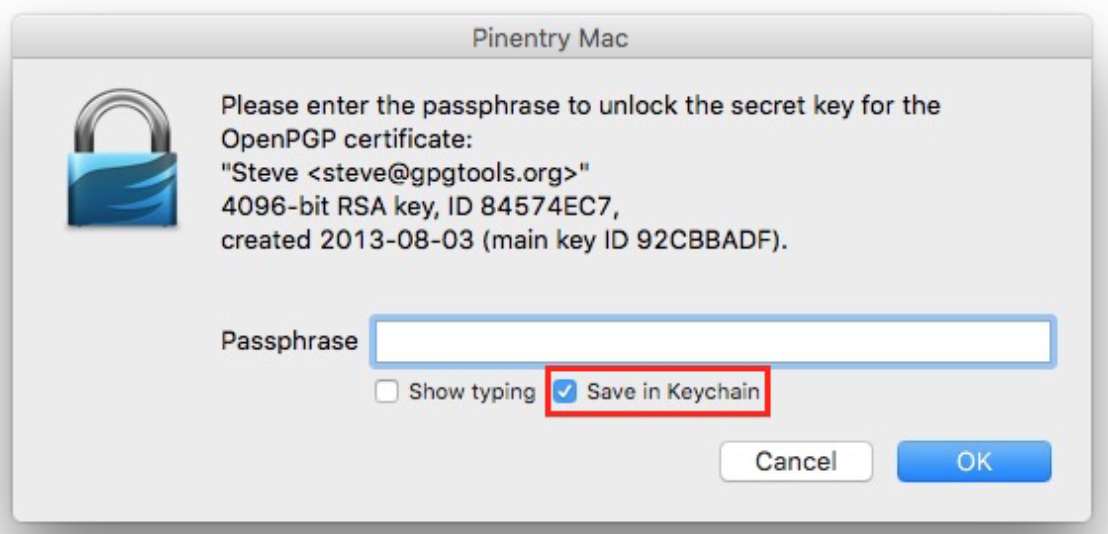Install GPG Suite on Mac OSX. June 23, 2017 Amber. App name: GPG Suite. Install Spring Tool Suite on Mac OSX; Install freeling on Mac OSX. The bundle id for Gpg Tools for Mac is com.tomsci.GpgTools. The application lies within Security Tools, more precisely General. This free software for Mac OS X is a product of gpgtools. The most popular versions of Gpg Tools for Mac are 2014.11, 2011.07.11 and 2011.07.
The GNU Privacy Guard
GnuPG is a complete and free implementation of the OpenPGP standard asdefined by RFC4880 (also known as PGP). GnuPG allows you to encrypt andsign your data and communications; it features a versatile key managementsystem, along with access modules for all kinds of public keydirectories. GnuPG, also known as GPG, is a command line tool withfeatures for easy integration with other applications. A wealth offrontend applications and libraries are available. GnuPG alsoprovides support for S/MIME and Secure Shell (ssh).
Since its introduction in 1997, GnuPG is Free Software (meaning thatit respects your freedom). It can be freely used, modified anddistributed under the terms of the GNU General Public License .
The current version of GnuPG is 2.2.23. See the downloadpage for other maintained versions.
Gpg4win is a Windows version of GnuPG featuring a context menu tool, acrypto manager, and an Outlook plugin to send and receive standardPGP/MIME mails. The current version of Gpg4win is 3.1.13.
Reconquer your privacy
Arguing that you don't care about the right to privacybecause you have nothing to hide is no different fromsaying you don't care about free speech because you havenothing to say. – Edward Snowden
Using encryption helps to protect your privacy and the privacy of thepeople you communicate with. Encryption makes life difficult for bulksurveillance systems. GnuPG is one of the tools that Snowden used touncover the secrets of the NSA.
Please visit the Email Self-Defense site to learn how and why youshould use GnuPG for your electronic communication.
News
The latest blog entries:
The latest release news:
(all news)
GnuPG 2.2.23 released (2020-09-03) important
GnuPG version 2.2.23 has been released today. This version fixes acritical security bug in 2.2.21 and 2.2.22 (CVE-2020-25125).
Please follow the instructions from the announcement mail and updateaffected installations. See also our bug entry #5050.
GnuPG 2.2.22 released (2020-08-27)
[Note: Do not use this release - use 2.2.23 instead.]
GnuPG version 2.2.22 has been released today. This is a maintenancerelease with a some minor changes. {more}
GnuPG 2.2.21 released (2020-07-09)
[Note: Do not use this release - use 2.2.23 instead.]
After the release of GnuPG 2.2.20 back in March it is now the time toget collected fixes from the last months out: GnuPG version 2.2.21 hasbeen released today. This is a maintenance release with a some minorchanges. {more}
Libgcrypt 1.8.6 released (2020-07-06)
Nearly a year passed since the last release and so the time is ripefor new maintenance release: Libgcrypt version 1.8.6 is nowavailable. {more}
Gpg4win fully approved for EU RESTRICTED.
After about a year of tweaking details of the approval, Gpg4win andGnuPG are now approved for EU RESTRICTED communication (VS-NfD). Thisapprovals covers the protocols S/MIME and OpenPGP (public-key andsymmetric-only) with hard- and soft-tokens. Our commercial branchGnuPG.com released a press notice (in German) today.
GnuPG 2.2.19 released (2019-12-07)
We are pleased to announce the availability of GnuPG version 2.2.19.This version fixes a regression introduced with the last release.{more}
GnuPG 2.2.18 released (2019-11-25)
We are pleased to announce the availability of GnuPG version 2.2.18.This is maintenance release to fix a couple of minor bugs and providea few feature updates. This release also retires the use of SHA-1 keysignatures created since this year. {more} (see also)

Libgcrypt 1.8.5 released (2019-08-29)
If you care about local site-channel attacks on ECDSA you may want toupdate to Libgcrypt version 1.8.5. CVE-CVE-2019-13627 {more}
Introduction
GPG, or GNU Privacy Guard, is a public key cryptography implementation. This allows for the secure transmission of information between parties and can be used to verify that the origin of a message is genuine.
In this guide, we will discuss how GPG works and how to implement it. We will be using an Ubuntu 16.04 server for this demonstration, but will include instructions for other distributions as well.
How Public Key Encryption Works
A problem that many users face is how to communicate securely and validate the identity of the party they are talking to. Many schemes that attempt to answer this question require, at least at some point, the transfer of a password or other identifying credentials, over an insecure medium.
Ensure That Only the Intended Party Can Read
To get around this issue, GPG relies on a security concept known as public key encryption. The idea is that you can split the encrypting and decrypting stages of the transmission into two separate pieces. That way, you can freely distribute the encrypting portion, as long as you secure the decrypting portion.
This would allow for a one-way message transfer that can be created and encrypted by anyone, but only be decrypted by the designated user (the one with the private decrypting key). If both of the parties create public/private key pairs and give each other their public encrypting keys, they can both encrypt messages to each other.
So in this scenario, each party has their own private key and the other user’s public key.
Validate the Identity of the Sender
Another benefit of this system is that the sender of a message can “sign” the message with their private key. The public key that the receiver has can be used to verify that the signature is actually being sent by the indicated user.
Set Up GPG Keys
GPG is installed by default in most distributions.
If for any reason GPG is not installed, on Ubuntu and Debian, you can update the local repo index and install it by typing:
On CentOS, you can install GPG by typing:
To begin using GPG to encrypt your communications, you need to create a key pair. You can do this by issuing the following command:
This will take you through a few questions that will configure your keys:
- Please select what kind of key you want: (1) RSA and RSA (default)
- What keysize do you want? 4096
- Key is valid for? 1y (expires after 1 year. If you are just testing, you may want to create a short-lived key the first time by using a number like “3” instead.)
- Is this correct? y
- Real name: your real name here
- Email address: your_email@address.com
- Comment: Optional comment that will be visible in your signature
- Change (N)ame, ©omment, (E)mail or (O)kay/(Q)uit? O
- Enter passphrase: Enter a secure passphrase here (upper & lower case, digits, symbols)
At this point, gpg will generate the keys using entropy. Entropy describes the amount of unpredictability and nondeterminism that exists in a system. GPG needs this entropy to generate a secure set of keys.
This process may take a long time depending on how active your system is and the keysize you selected. To generate additional entropy more easily, you can use a tool called haveged. Open up a new terminal and SSH into the server again to set up haveged on your server.
Create a Revocation Certificate
You need to have a way of invalidating your key pair in case there is a security breach or in case you lose your secret key. There is an easy way of doing this with the GPG software.
This should be done as soon as you make the key pair, not when you need it. This revocation key must be generated ahead of time and kept in a secure, separate location in case your computer is compromised or inoperable. To generate a revocation key, type:
You will be asked to confirm the revocation key creation and then prompted for the reason that it is being revoked. This information will be visible to other users if the revocation is used in the future. You can choose any of the available options, but since this is being done ahead of time, you won’t have the specifics. Often, it is a good idea to create a revocation certificate for each of the likely scenarios for maximum flexibility.
Afterwards, you will then be asked to supply a comment and finally, to confirm the selections. Before creating the revocation certificate, you will need to enter your GPG key’s passphrase to confirm your identity. The revocation certificate will be written to the file specified by the --output flag (revocation.crt in our example):
You should immediately restrict the permissions on the generated certificate file in order to prevent unauthorized access:
The revocation certificate must be kept secure so that other users cannot revoke your key. As the message states, you should consider backing the certificate up to other machines and printing it out, as long as you can secure it properly.
How To Import Other Users’ Public Keys
GPG would be pretty useless if you could not accept other public keys from people you wished to communicate with.
You can import someone’s public key in a variety of ways. If you’ve obtained a public key from someone in a text file, GPG can import it with the following command:
There is also the possibility that the person you are wishing to communicate with has uploaded their key to a public key server. These key servers are used to house people’s public keys from all over the world.
A popular key server that syncs its information with a variety of other servers is the MIT public key server. You can search for people by their name or email address by going here in your web browser:
You can also search the key server from within GPG by typing the following:
You can use this method of searching by name or email address. You can import keys that you find by following the prompts.

How To Verify and Sign Keys
While you can freely distribute your generated public key file and people can use this to contact you in a secure way, it is important to be able to trust that the key belongs to who you think it does during the initial public key transmission.
Verify the Other Person’s Identity
How do you know that the person giving you the public key is who they say they are? In some cases, this may be simple. You may be sitting right next to the person with your laptops both open and exchanging keys. This should be a pretty secure way of identifying that you are receiving the correct, legitimate key.
But there are many other circumstances where such personal contact is not possible. You may not know the other party personally, or you may be separated by physical distance. If you never want to communicate over insecure channels, verification of the public key could be problematic.
Luckily, instead of verifying the entire public keys of both parties, you can simply compare the “fingerprint” derived from these keys. This will give you a reasonable assurance that you both are using the same public key information.
You can get the fingerprint of a public key by typing:
This will produce a much more manageable string of numbers to compare. You can compare this string with the person themselves, or with someone else who has access to that person.
Sign Their Key
Signing a key tells your software that you trust the key that you have been provided with and that you have verified that it is associated with the person in question.
To sign a key that you’ve imported, simply type:
When you sign the key, it means you verify that you trust the person is who they claim to be. This can help other people decide whether to trust that person too. If someone trusts you, and they see that you’ve signed this person’s key, they may be more likely to trust their identity too.
You should allow the person whose key you are signing to take advantage of your trusted relationship by sending them back the signed key. You can do this by typing:
You’ll have to type in your passphrase again. Afterwards, their public key, signed by you, will be displayed. Send them this, so that they can benefit from gaining your “stamp of approval” when interacting with others.
When they receive this new, signed key, they can import it, adding the signing information you’ve generated into their GPG database. They can do this by typing:
They can now demonstrate to other people that you trust that their identity is correct.
How To Make Your Public Key Highly Available
Because of the way that public key encryption is designed, there is not anything malicious that can happen if unknown people have your public key.

With this in mind, it may be beneficial to make your public key publicly available. People can then find your information to send you messages securely from your very first interaction.
You can send anyone your public key by requesting it from the GPG system:
You can then send this file to the other party over an appropriate medium.
If you want to publish your key to a key server, you can do it manually through the forms available on most of the server sites.
Another option is to do this through the GPG interface. Look up your key ID by typing:
The highlighted portion in the output below is the key ID (look for the pub along the left-hand column if you’re uncertain about which one to use). It is a short way to reference the key to the internal software.
To upload your key to a certain key server, you can then use this syntax:
The key will be uploaded to the specified server. Afterwards, it will likely be distributed to other key servers around the world.
Encrypt and Decrypt Messages with GPG
You can easily encrypt and decrypt messages after you have shared your keys with the other party.
Encrypt Messages
You can encrypt messages using the “–encrypt” flag for GPG. The basic syntax would be:
This encrypts the message using the recipient’s public key, signs it with your own private key to guarantee that it is coming from you, and outputs the message in a text format instead of raw bytes. The filename will be the same as the input filename, but with an .asc extension.
You should include a second “-r” recipient with your own email address if you want to be able to read the encrypted message. This is because the message will be encrypted with each person’s public key, and will only be able to be decrypted with the associated private key.
So if it was only encrypted with the other party’s public key, you would not be able to view the message again, unless you somehow obtained their private key. Adding yourself as a second recipient encrypts the message two separate times, one for each recipient.
Decrypt Messages
When you receive a message, simply call GPG on the message file:
The software will prompt you as necessary.
If instead of a file, you have the message as a raw text stream, you can copy and paste it after typing gpg without any arguments. You can press “CTRL-D” to signify the end of the message and GPG will decrypt it for you.
Key Maintenance
There are a number of procedures that you may need to use on a regular basis to manage your key database.
To list your available GPG keys that you have from other people, you can issue this command:
Your key information can become outdated if you are relying on information pulled from public key servers. You do not want to be relying on revoked keys, because that would mean you are trusting potentially compromised keys.
You can update the key information by issuing:
Gpg Keychain For Windows 10
This will fetch new information from the key servers.
You can pull information from a specific key server by using:
Gpg Tools Windows 10
You may receive error messages if any of your keys cannot be found on the key server.
Conclusion
Using GPG correctly can help you secure your communications with different people. This is extremely helpful, especially when dealing with sensitive information, but also when dealing with regular, everyday messaging.
Gpg For Windows
Because of the way that certain encrypted communications can be flagged by monitoring programs, it is recommended to use encryption for everything, not just “secret” data. That will make it more difficult for people to know when you are sending important data or just sending a friendly hello.
